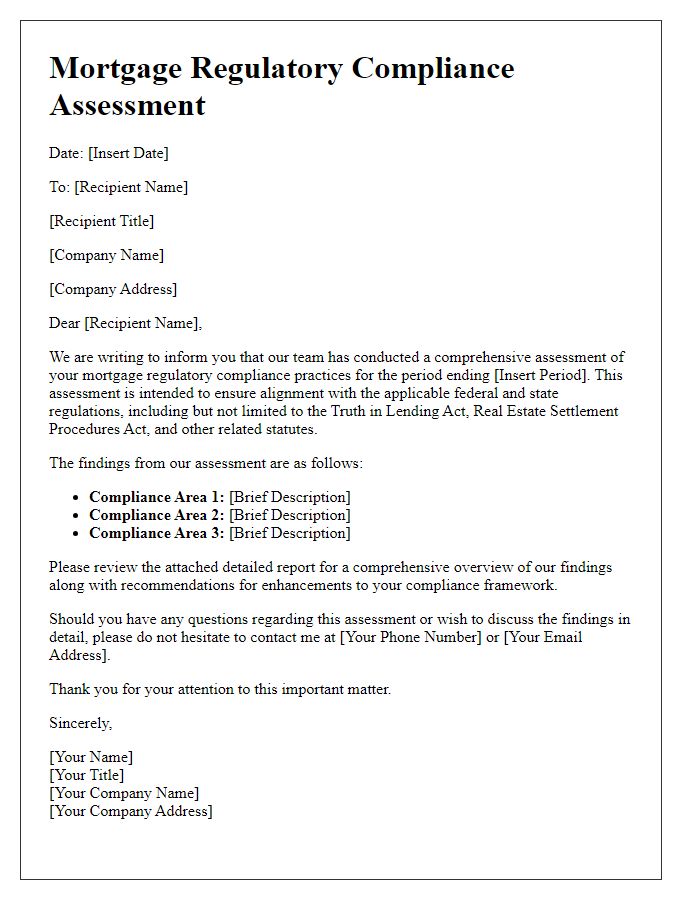Are you navigating the complex world of mortgage regulatory compliance? Understanding the intricate requirements can feel overwhelming, but it's essential for ensuring your financial security and maintaining the integrity of your lending practices. In this article, we'll break down the vital components of mortgage regulatory compliance assurance, offering you simple insights and practical tips. So, let's dive in and empower yourself with the knowledge you need to stay compliant!

Regulatory Framework Adherence
Mortgage regulatory compliance ensures that financial institutions adhere to laws such as the Truth in Lending Act (TILA) and the Real Estate Settlement Procedures Act (RESPA). Compliance departments employ frameworks that include regular audits, training sessions, and updated procedural manuals to uphold standards set by the Consumer Financial Protection Bureau (CFPB). Failure to comply can result in significant penalties, including fines that may exceed thousands of dollars, and can damage an institution's reputation in the financial market. Robust compliance monitoring processes involve the analysis of loan documentation and disclosure practices to ensure transparency and protect consumers throughout the mortgage process.
Risk Management and Mitigation
Effective mortgage regulatory compliance requires comprehensive risk management strategies. Identifying key regulatory standards, such as the Dodd-Frank Act and the Truth in Lending Act, is essential for aligning practices with legal requirements. Institutions must implement robust training programs to ensure employees understand and adhere to compliance measures. Regular audits of internal processes can uncover potential deficiencies, allowing for timely corrective actions. Utilizing technology, such as compliance management software, enhances monitoring capabilities, reducing the likelihood of regulatory breaches. Additionally, establishing clear communication channels among stakeholders fosters a culture of compliance, further mitigating risk in mortgage operations.
Documentation and Record-Keeping
Mortgage regulatory compliance assurance requires thorough documentation and record-keeping to meet legal standards set by governing bodies such as the Consumer Financial Protection Bureau (CFPB) and the Department of Housing and Urban Development (HUD). Detailed records must include loan applications, underwriting documents, and borrower communications, ensuring accuracy and completeness. For instance, the Equal Credit Opportunity Act mandates retention of records for at least 25 months, thus necessitating meticulous organization to facilitate audits. Implementing electronic records management systems can enhance compliance efficiency, enabling rapid access to necessary documentation. Additionally, regular training sessions for staff regarding updated regulations help maintain adherence to evolving compliance expectations within the mortgage industry.
Internal Audit and Monitoring
Internal audits play a crucial role in maintaining mortgage regulatory compliance within financial institutions. These audits assess the procedures and practices concerning mortgage operations, examining adherence to regulations set forth by agencies like the Consumer Financial Protection Bureau (CFPB) and federal laws such as the Truth in Lending Act (TILA). Effective internal monitoring includes reviewing documentation such as loan applications (often comprising over 30 pages), underwriting reports, and compliance checklists to identify potential discrepancies. Regular training sessions (quarterly) for staff involved in mortgage processing ensure that all employees are aware of the latest regulatory updates and best practices. The audit process not only improves compliance but also enhances the institution's reputation and helps mitigate risks associated with non-compliance, which can result in significant penalties or legal actions.
Compliance Training Programs
Compliance training programs for mortgage regulatory assurance are essential in the financial services industry, particularly in the United States. These programs include comprehensive modules designed to educate employees about the Truth in Lending Act (TILA), Real Estate Settlement Procedures Act (RESPA), and Equal Credit Opportunity Act (ECOA). Financial institutions typically host workshops, webinars, and interactive sessions to ensure staff understand the importance of adhering to these regulations. The training covers key aspects such as loan origination procedures, disclosure requirements, fair lending practices, and consumer protection measures. Additionally, regular assessments and refresher courses are implemented to keep employees updated on regulatory changes and best practices, ensuring that the institution maintains compliance and mitigates the risk of legal penalties or reputational damage.













Comments